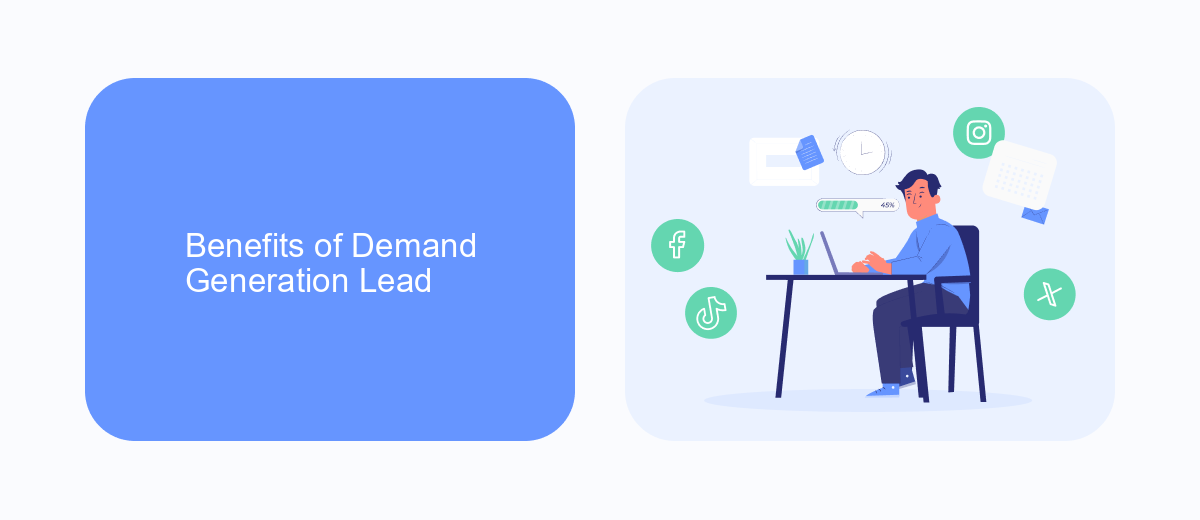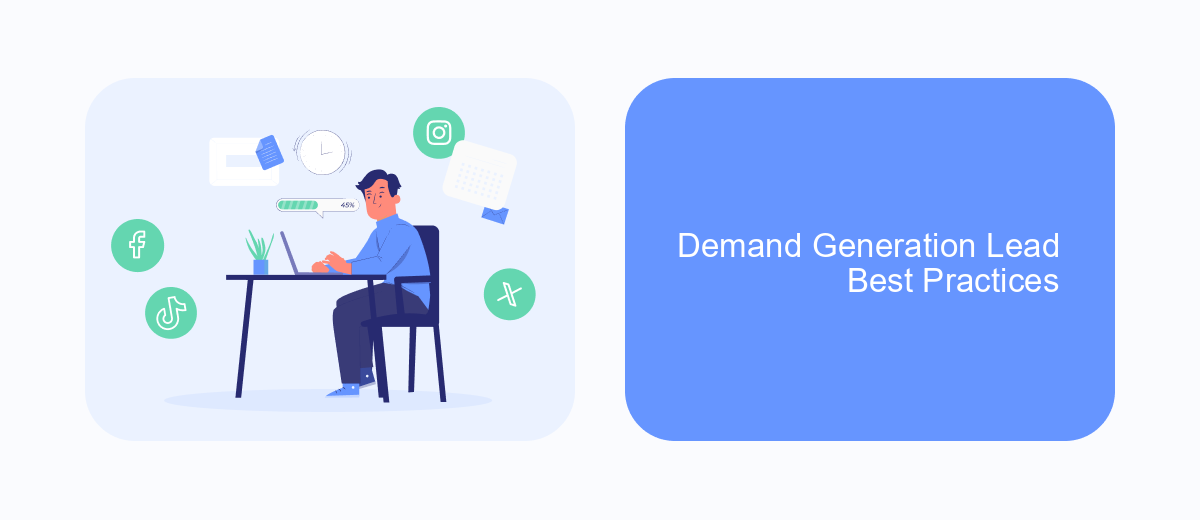In today's competitive business landscape, the role of a Demand Generation Lead has become pivotal. This position is crucial for driving targeted marketing efforts, generating high-quality leads, and ultimately fueling revenue growth. By leveraging data-driven strategies and innovative campaigns, a Demand Generation Lead ensures that businesses not only attract potential customers but also nurture them through the sales funnel effectively.
What is Demand Generation Lead?
Demand Generation Lead refers to the strategic process of creating awareness and interest in a company's products or services to generate high-quality leads. This involves a combination of marketing activities designed to capture the attention of potential customers and nurture them through the sales funnel.
- Content Marketing: Producing valuable content to attract and engage the target audience.
- SEO: Optimizing web content to rank higher in search engine results.
- Social Media Marketing: Utilizing social platforms to reach and interact with prospects.
- Email Campaigns: Sending targeted messages to nurture leads.
- Webinars and Events: Hosting online and offline events to educate and attract potential customers.
Effective demand generation often requires seamless integration of various marketing tools and platforms. Services like SaveMyLeads can automate the integration process, connecting different marketing applications to streamline lead management and ensure no potential customer falls through the cracks. By leveraging these tools, businesses can efficiently manage their demand generation efforts and drive more qualified leads through the sales pipeline.
Benefits of Demand Generation Lead

Demand generation leads offer numerous benefits to businesses looking to expand their customer base and increase revenue. One of the primary advantages is the ability to attract high-quality leads that are more likely to convert into paying customers. By using targeted marketing strategies, companies can engage potential clients who have shown genuine interest in their products or services, thereby increasing the efficiency of their sales efforts. This focused approach not only saves time but also maximizes the return on investment for marketing campaigns.
Another significant benefit is the enhancement of brand awareness and credibility. Through consistent and valuable content, businesses can establish themselves as industry leaders and build trust with their audience. Additionally, integrating demand generation tools such as SaveMyLeads can streamline the process of capturing and managing leads. SaveMyLeads allows for seamless integration with various platforms, ensuring that no potential customer slips through the cracks. This automation not only improves lead management but also frees up valuable time for sales teams to focus on closing deals and nurturing relationships.
How to Generate Demand Generation Lead

Generating demand generation leads involves a strategic approach that combines various marketing tactics to attract and engage potential customers. The goal is to create interest and awareness around your product or service, ultimately converting prospects into leads.
- Create Valuable Content: Develop informative and engaging content that addresses the pain points and interests of your target audience. This can include blog posts, whitepapers, eBooks, and webinars.
- Leverage Social Media: Use social media platforms to share your content, engage with your audience, and run targeted ad campaigns to reach potential leads.
- Optimize Your Website: Ensure your website is user-friendly, mobile-optimized, and has clear calls-to-action (CTAs) that guide visitors towards conversion.
- Email Marketing: Build and nurture an email list by offering valuable content and exclusive offers. Use personalized email campaigns to engage and convert leads.
- Use Integration Tools: Utilize services like SaveMyLeads to automate lead capture and integration with your CRM, ensuring no lead is overlooked and follow-ups are timely.
By following these steps, you can effectively generate demand generation leads and build a robust pipeline of potential customers. Remember, the key is to provide value and maintain consistent engagement with your audience throughout their buyer journey.
Demand Generation Lead Best Practices

Effective demand generation is crucial for any business looking to scale its lead generation efforts. It involves a combination of strategies, tools, and best practices to attract and convert high-quality leads. By following these best practices, you can ensure that your demand generation efforts are both efficient and effective.
First and foremost, understanding your target audience is key. Conduct thorough research to identify the needs, preferences, and pain points of your potential customers. This will allow you to craft personalized marketing messages that resonate with your audience, increasing the likelihood of conversion.
- Leverage data-driven insights to optimize your campaigns.
- Utilize marketing automation tools for efficient lead nurturing.
- Integrate your CRM with tools like SaveMyLeads to streamline lead management.
- Create high-quality, engaging content that addresses your audience's needs.
- Regularly analyze and adjust your strategies based on performance metrics.
By implementing these best practices, you can build a robust demand generation strategy that not only attracts potential leads but also nurtures them through the sales funnel. Remember, the key to successful demand generation lies in continuous optimization and staying attuned to the evolving needs of your target audience.


Demand Generation Lead Metrics
Measuring the effectiveness of demand generation lead efforts requires a keen understanding of various metrics. Key performance indicators (KPIs) such as conversion rates, cost per lead (CPL), and lead quality are essential. Conversion rates help gauge how well your campaigns are turning prospects into leads. CPL measures the financial efficiency of your lead generation activities, while lead quality assesses the potential value of the leads generated. Monitoring these metrics allows you to optimize your strategies and allocate resources more effectively.
Integrating your lead generation tools with CRM and marketing automation platforms can streamline the tracking of these metrics. Services like SaveMyLeads can facilitate seamless integration, ensuring that data flows smoothly between systems. This not only saves time but also enhances data accuracy, enabling more precise measurement and analysis. By leveraging such integrations, businesses can gain deeper insights into their demand generation efforts, ultimately driving more effective decision-making and improved ROI.
FAQ
What is a Demand Generation Lead?
How does a Demand Generation Lead measure success?
What strategies are commonly used in demand generation?
How important is automation in demand generation?
What skills are essential for a Demand Generation Lead?
You probably know that the speed of leads processing directly affects the conversion and customer loyalty. Do you want to receive real-time information about new orders from Facebook and Instagram in order to respond to them as quickly as possible? Use the SaveMyLeads online connector. Link your Facebook advertising account to the messenger so that employees receive notifications about new leads. Create an integration with the SMS service so that a welcome message is sent to each new customer. Adding leads to a CRM system, contacts to mailing lists, tasks to project management programs – all this and much more can be automated using SaveMyLeads. Set up integrations, get rid of routine operations and focus on the really important tasks.
